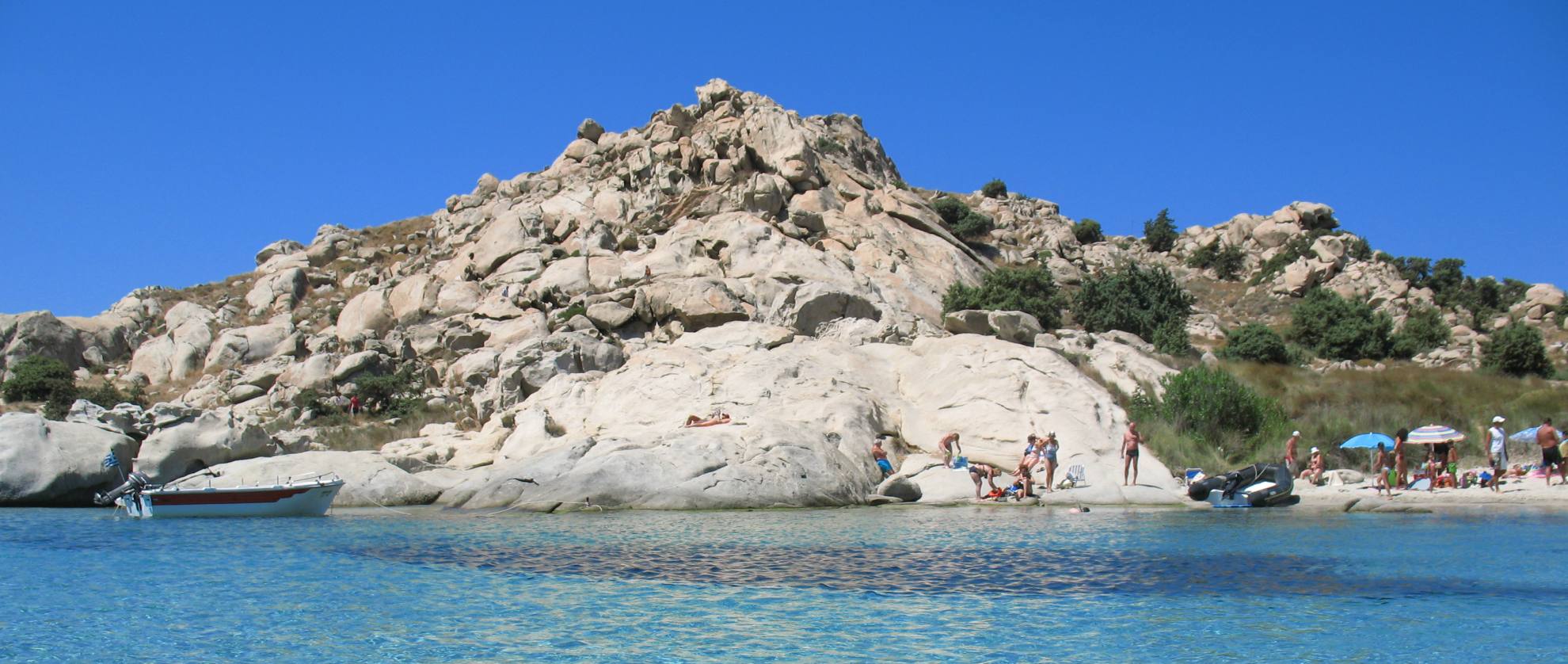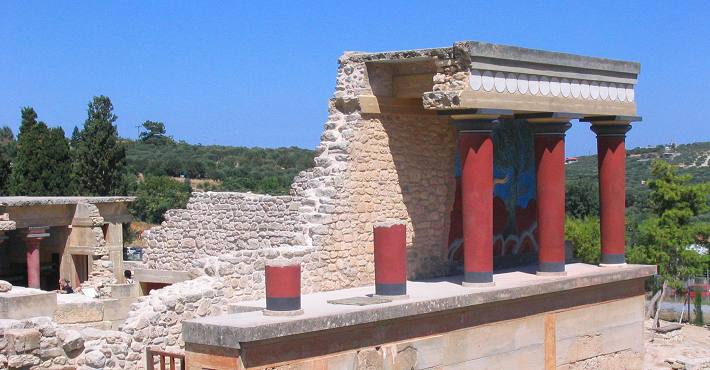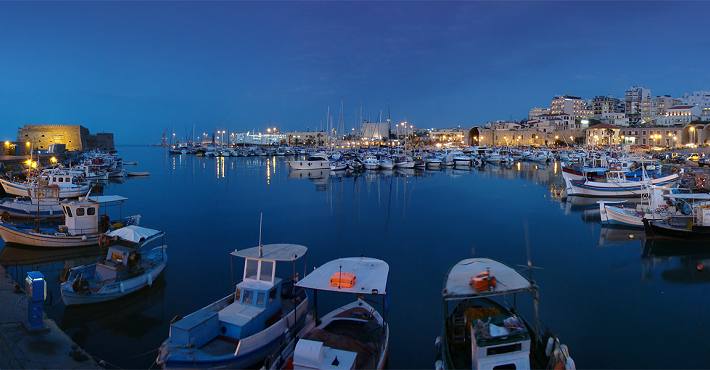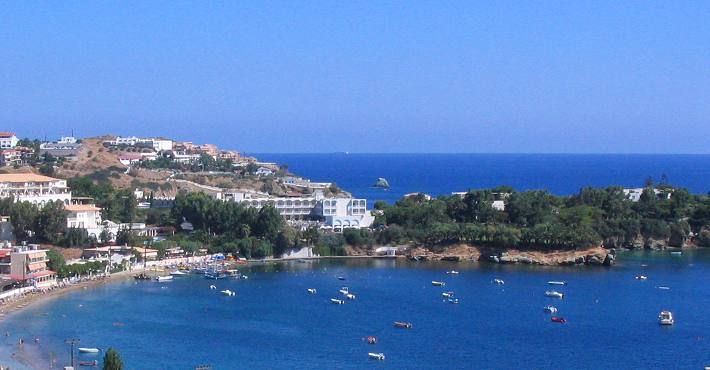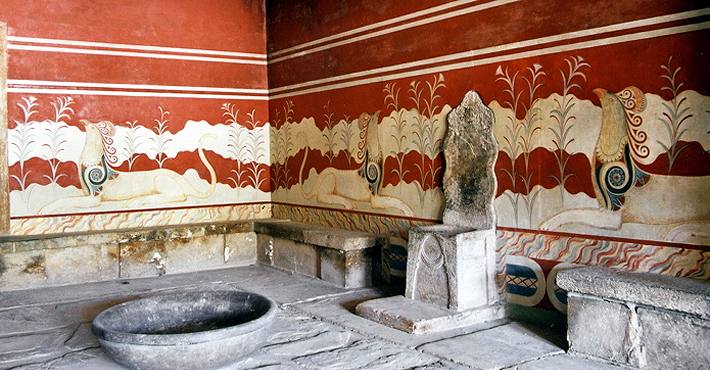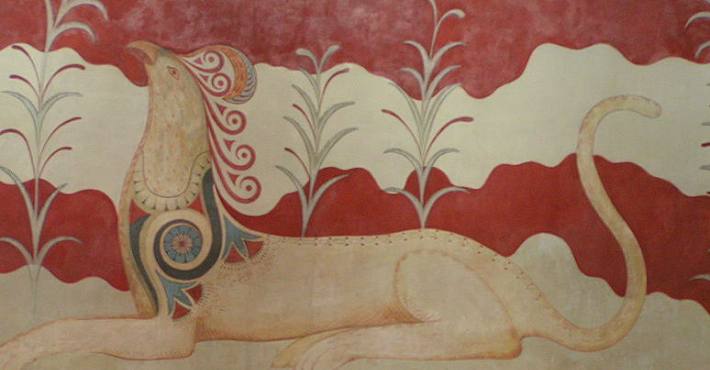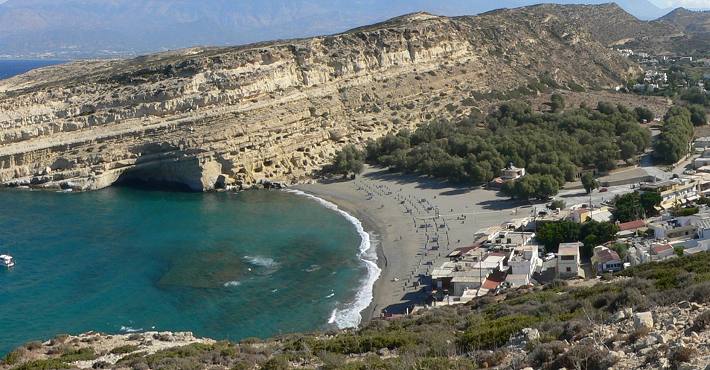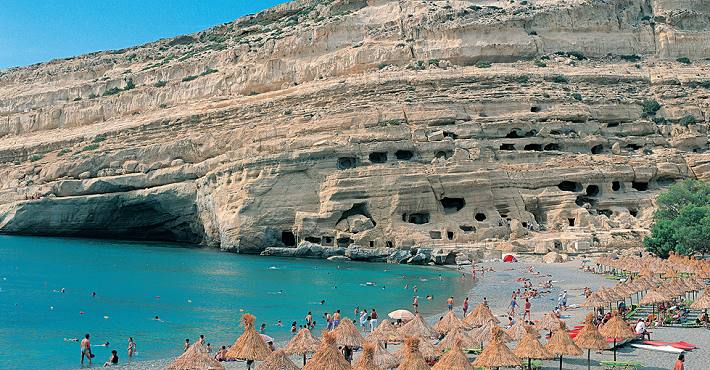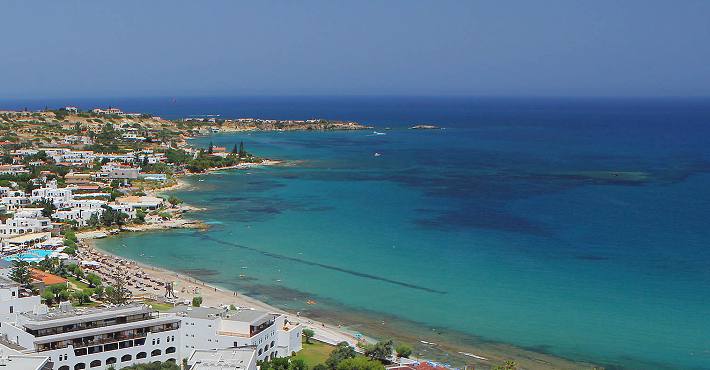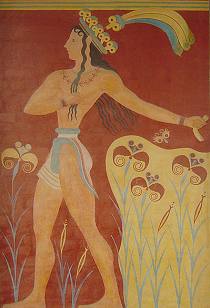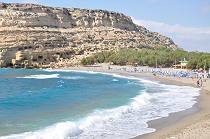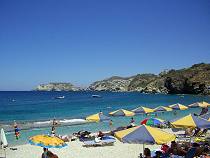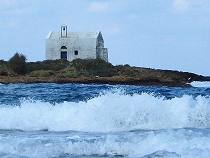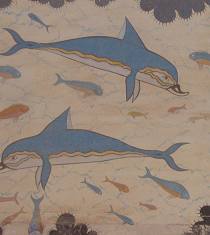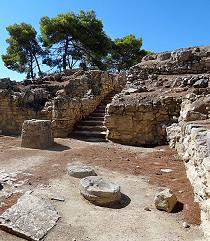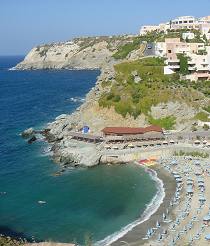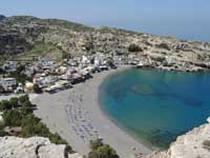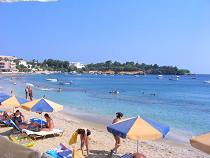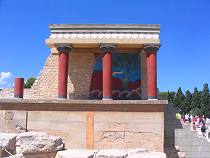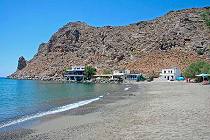Heraklion - The centre of Minoan Civilization
The beautiful and densely populated county of Heraklion lies in the centre of Crete, where the most important center of Minoan civilization was. Knossos, Phaistos, Gortyna and Malia are the most important attractions for hundreds of thousands of tourists from all over the world.
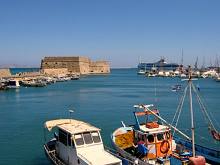 Heraklion is home to ancient monuments and examples of major Western civilization. The region of Heraklion is famous for Zeus, the Greek god of hospitality, who met and fell in love with a Princess of unsurpassed beauty, named Europa. She gave birth to the race of Minoan Kings and sages, the founders of the earliest civilized nation in Europe.
Heraklion is home to ancient monuments and examples of major Western civilization. The region of Heraklion is famous for Zeus, the Greek god of hospitality, who met and fell in love with a Princess of unsurpassed beauty, named Europa. She gave birth to the race of Minoan Kings and sages, the founders of the earliest civilized nation in Europe.
Heraklion City, the capital of the county is a busy city, is rich in monuments, most of which comes since Venetian rule.
Getting There
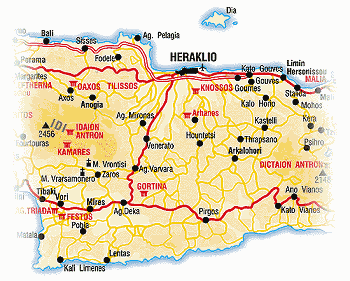 By Sea:
By Sea:
There are ferry connections to Piraeus, Rhodes, Karpathos, Santorini, Mykonos, Sitia (Harbour in Crete).
By Air:
From Athens, Thessaloniki.
Sky Express (the airline of Crete) connects Heraklion with Rhodes, Limnos, Kos, Kythera Islands.
Heraklion Beaches
North Crete
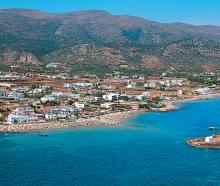 Agia Pelagia - Lygaria - Made - Mononaftis - Psaromoura, Sandy and pebble beaches
Agia Pelagia - Lygaria - Made - Mononaftis - Psaromoura, Sandy and pebble beaches
Ammoudara, Five kilometres long of sand. Well organised
Gournes, Sandy beach
Gouves, Sandy beach
Malia, Very long (6 Km) sandy beach
Stalida, Sandy beach with shallow waters
South Crete
Tsoutsouros, Sandy beach
Kaloi Limenes, Pebbly beach
Keratokampos, Long beautiful beach with pebbles and sand
Kokkinos Pirgos , Long sandy beach
Matala, Popular sandy beach, also famous during the hippie era of the '60s and '70s
Paleokastro, Sandy beach and pebbles
Pantanassa, Pebbles and sand
Places to visit in Heraklion
Knossos:
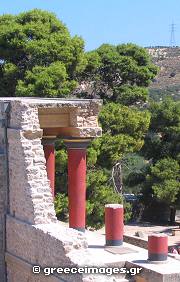 Located just 5 kilometers from Heraklion City. Here was the grandest palace of Minoan Crete, which has retained its character unchanged to this day. The first palace was destroyed in 1700 B.C. and was rebuilt according to new architectural plans. According to mythology. Minos, son of Zeus and Europa, was the first king. By means of his fleet, Minos had subjugated Cyclades, Megara and Athens, while establishing trade relations with Egypt and the eastern harbors. Mythology further relates that Minos’ wife Pasiphae slept with a holy bull, thus giving birth to the Minotaur, a creature that was half man and half bull. With the aid of Minos’ daughter Ariadne, Theseus, hero of Athens, managed to find his way to the monster, slay it and return, thus relieving his city of a blood toll of its young citizens imposed by Minos. With a population of 100.000, Knossos was the center of Minoan civilization. It was destroyed several times, but the final blow was dealt by the earthquake and volcanic eruption on Santorini in 1450 BC, which brought Minoan civilization to an end. Nevertheless, Knossos remained a powerful city. Excavations were begun in 1878 by M. Kalokairinos and continued from 1900 on by the Englishman Arthur Evans, who revealed the main structure of the palace. The complex consists of multi-storey buildings with five floors on the east side and three on the west, with imposing facades, multi-colored decorations, frescoes and painted pillars. To the south lies the multi-storey complex of the royal rooms, connected via the great staircase. Going down the stairs, you will find yourself in the arms and double axes room.
Located just 5 kilometers from Heraklion City. Here was the grandest palace of Minoan Crete, which has retained its character unchanged to this day. The first palace was destroyed in 1700 B.C. and was rebuilt according to new architectural plans. According to mythology. Minos, son of Zeus and Europa, was the first king. By means of his fleet, Minos had subjugated Cyclades, Megara and Athens, while establishing trade relations with Egypt and the eastern harbors. Mythology further relates that Minos’ wife Pasiphae slept with a holy bull, thus giving birth to the Minotaur, a creature that was half man and half bull. With the aid of Minos’ daughter Ariadne, Theseus, hero of Athens, managed to find his way to the monster, slay it and return, thus relieving his city of a blood toll of its young citizens imposed by Minos. With a population of 100.000, Knossos was the center of Minoan civilization. It was destroyed several times, but the final blow was dealt by the earthquake and volcanic eruption on Santorini in 1450 BC, which brought Minoan civilization to an end. Nevertheless, Knossos remained a powerful city. Excavations were begun in 1878 by M. Kalokairinos and continued from 1900 on by the Englishman Arthur Evans, who revealed the main structure of the palace. The complex consists of multi-storey buildings with five floors on the east side and three on the west, with imposing facades, multi-colored decorations, frescoes and painted pillars. To the south lies the multi-storey complex of the royal rooms, connected via the great staircase. Going down the stairs, you will find yourself in the arms and double axes room.
Faistos:
Phaistos archaeological site is located 60 kilometers SW of Heraklion City.
Its palace, also dating to Minoan times, can be considered equal to that of Knossos, but is not as complicated. All around the palace lay the city of Phaistos, on a site commanding a magnificent view.
Historical Museum of Crete: - Tel: +30 2810 283219, 288708
The Historical Museum of Crete presents a comprehensive view of Cretan history from early Christian times to the present day. It was founded in 1953 by the Society of Cretan Historical Studies,
Sculpture, numismatic, byzantine and post-byzantine and ethnographic collections are exhibited.
The Library at the Historical Museum of Crete contains rare editions, periodicals, a local newspaper archive, a rich collection of historical archives and photographic material.
Cretaquarium Thalassokosmos: - Tel: +30 2810 337788
Located in Gournes (15 Km from Heraklion city), it is the largest in Mediterranean.
Museum of Natural History - Tel: +30 2810 324366
Touring Heraklion
Heraklion City
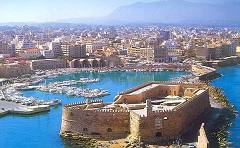 Heraklion, the capital city of the county, is rich in monuments, most of which derive from the time of Venetian rule.
These include the walls, the famous Koules fortress and the legendary Lions’ Fountain. Besides the monuments inside the city, which take at least three days to see in their entirety, visitors should also go to Knossos to get acquainted with the unique Minoan civilization.
Heraklion, the capital city of the county, is rich in monuments, most of which derive from the time of Venetian rule.
These include the walls, the famous Koules fortress and the legendary Lions’ Fountain. Besides the monuments inside the city, which take at least three days to see in their entirety, visitors should also go to Knossos to get acquainted with the unique Minoan civilization.
There are many medieval monuments that indicate the prosperity of the era, situated in the center of the city. If you continue onwards from the port to the city centre, the first significant landmark you can see is 'Lotzia'. Nowadays this houses the City Council and part of the Municipality of Heraklion services departments. 'Lotzia' used to be the society for the Duke and Officers of Crete, and is decorated with uniquely sculptured coats of arms, trophies, and metopes. For centuries the noblemen of Crete gathered here to rest, to be entertained, or to practice their formal rituals. Its passageways have their roots in the 14th century, but 'Lotzia' took its final architecture from the early part of the 17th century. It is located in the PIAZZA DEI SIGNORI (Square of the Administrative Authorities). It is considered to be the finest Venetian monument in the city, and was awarded the EUROPA NOSTRA first prize in 1987, for best renovated and preserved European monument of the year.
Agia Pelagia
Agia Pelagia is a small, quiet resort situated high on a peninsular with spectacular views accross the bay.
It is know for its sandy beaches and calm sea and the stunning views.
It is an excellent choice for those seeking a relaxing and lay back holiday.
Popular resorts in the area are also Lygaria and Mathe.
Arhanes
This beautiful market town has won an award for being one of the best-kept towns in the European Union. Several sites of archaeological interest lie in the area.
Arvi (87 Km from Heraklion)
Seaside village on the Libyan Sea, harbor of Viannos. In recent times, this was the first place on Crete where bananas were commercially cultivated; other agricultural produce is now also grown in the area.
7 km from Viannos is Keratokambos, a seaside settlement with clean beaches and scenic little taverns.
6 km further west is Tsoutsouras, another beautiful seaside settlement with picturesque bays.
Chani Kokkini
A beautiful seaside settlement with many hotels, restaurants and entertainment
centers. Its main attractions are two
sandy beaches, each gently shelving and
equipped with sun loungers and a range
of water sports.
When on the beach, you can see the ruins of an ancient settlement in the sea, which is believed by archaeologists to be the place where ships were built during Minoan times.
Fodele
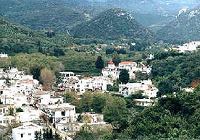 Fodele is a mountainous area. Both the old core of the settlement at the western slope of the small valley and the newer at the banks of the small river compose a very interesting structured environment, which in combination with the rich vegetation and the orange groves create a unique landscape for central Crete.
Fodele is a mountainous area. Both the old core of the settlement at the western slope of the small valley and the newer at the banks of the small river compose a very interesting structured environment, which in combination with the rich vegetation and the orange groves create a unique landscape for central Crete.
The village comprises an oasis of freshness, especially for the hot days of summer. The village's square offers itself for relaxation and gives the chance to visitors to enjoy their coffee or lunch next to the river underneath the perennial plane trees. A bit further down the square, at Archontico settlement there is Dominico Theotocopoulos Museum of Replicas, which is housed at the alleged birthplace of the great painter. At the same settlement there is the small Byzantine church of Panagia (Virgin Mary) (The presentation of the Virgin Mary), which is said to be the motive of Greco to get involved with hagiography. This church is built on the ruins of an older three-sectioned Byzantine church with wonderful frescos and sculptures.
Gazi
Just 7 Km away from Heraklion on the right side of the bank of Gazanos river, as the ancient Triton river is known. The area of Gazi has been inhabited since Minoan times and nowadays hosts the Municipality's headquarters at a newly built Town Hall situated at Platia Eleftherias. It is a resort with 12 settlements presenting residential booming maintaining the same time its individual cultural interest.
Ammoudara is one of the most organized beaches Heraklion county. The 5 Km long sandy beach is suitable for sports. In the summertime, it is most vibrant since it embraces thousands of tourists. There are taverns with traditional dishes, coffee shops, bars and clubs.
Three (3) Km after Gazi is Kavrochori settlement, which is popular for its vivid traditional character and picturesqueness. Narrow allies, old factories and stone built houses with 'ontas' and wooden staircase. It is worth mentioning the old olive press (Fabrika) of the village that is at least 200 years old.
Gouves
A village cut in two, due to the road, to Upper and Lower Gouves. The Lower part is next to the sea with amazing beaches, a developed tourist center, whereas the Upper are inland, among olive trees and vineyards.
Hersonissos
The most modern and well-organized tourist area in the county.
During the summer, its beautiful beaches are full of tourists and there
is a thriving nightlife in the bars and hotels.
Days can been spent relaxing on the sandy and shingle beaches.
There are plenty of tavemas for local and international specialities, a feast of fast food bars for snacks on the move restaurants, patisseries, cafe bars.
The independent city of Hersonissos once existed, harbor of the ancient city Lyttos. You can also visit the very interesting Lychnostatis Museum of Cretan Traditional Life and Folk Culture.
Kalessa
It is a small, picturesque village with a traditional settlement of stone built houses, on a hill. It bring back past times of 1900 with the old quarter and the narrow allies that give a sense of tranquility and simplicity. The traditional coffee shops serve tsikoudia (local strong alcoholic drink) and Cretan rusks with olives from the local production and wine made from the famous grapes of Kalessa.
At the square of the village there is Evagelismos church (Annunciation church), typical sample of the Venetian domination in Crete of 13th century. Another significant church is Ai Yiorgi church (St. George church), stone built which dates back to 1300.
Lendas (74 Km from Heraklion)
Seaside resort village which draws hundreds of tourists in the summer. Nearby lie the ruins of the ancient city of Lebena, which was sacred and a place of worship for the god Asclepius and Hygeia Sotira.
Malia
Malia has one of the best beaches on the north coast of
Crete, a 2 Km stretch of excellent golden sand.
It is on the whole a fun loving and lively resort for a hectic nightlife.
For those who appreciate the cultural history of Crete, visit the Minoan Palace in Old Malia in the upper part of the village with its narrow streets and traditional tavernas is ideal for romantics.
The monastery of Panagia Palatiani with beautiful frescoes, as well as the scenic village of Krasi, which was a favorite summer retreat for the young Kazantzakis and his friends and family are worth a visit.
Matala
One of Crete's most ancient cities, until the 1970’s this was a little-known fishing village. It then suddenly shot to fame on account of its large international hippy colony. The reputation gained in its heyday has taken years to live down.
Stalida (Stalis)
Stalida, sandwiched between Hersonissos and Malia,
is a luxuriantly green, densely populated tourist resort
with beautiful beaches and many hotel complexes.
It seems to have something for all ages and tastes, though it's particularly good for beach lovers.
Here you will find many taverns, bars and all sorts of entertainment. You may visit Mochos village with small traditional cafes.
What is very popular in this area is the fair, which takes place on the 15 of August.
Zaros
One of the most beautiful provincial centres in the county, dominating the eastern slope of Mount Ida, Psiloritis with its plentiful water and the Votomos and Mati springs. Visitors can sit at picturesque tavernas, where they can fish trout from tanks and enjoy them within a few minutes.
